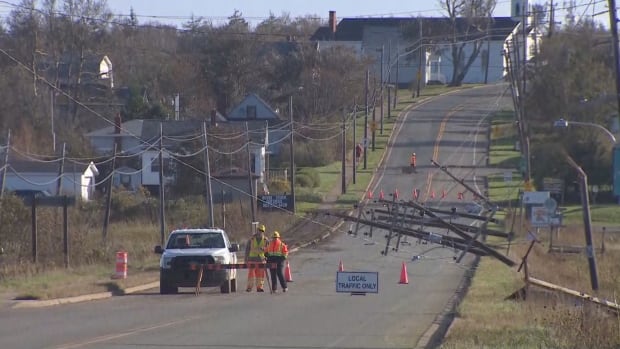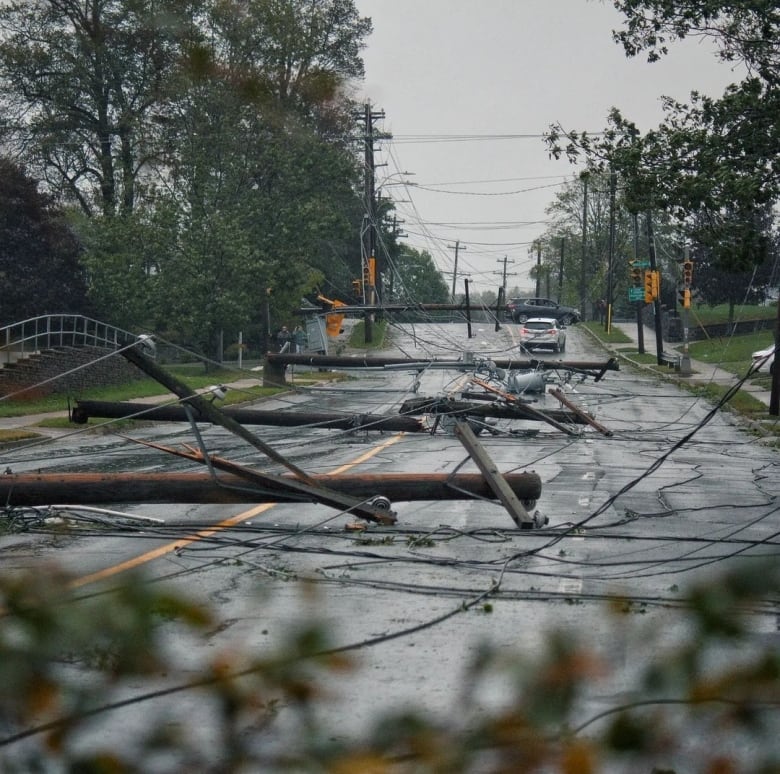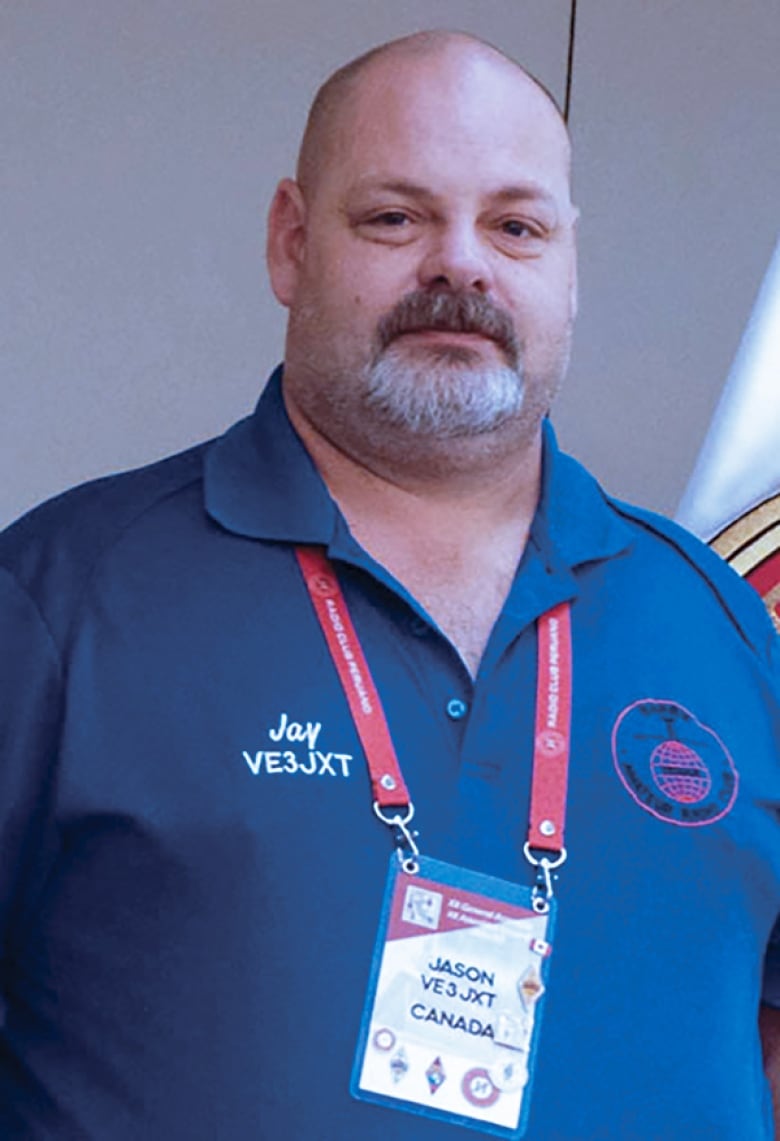
As Atlantic Canada gears up for another hurricane season after a year of unprecedented disasters linked to climate change — including post-tropical storm Fiona last September — amateur radio operators say a simple technology can play a part in the response to disasters across the region.
When Fiona hit Nova Scotia, it affected electrical grids and telecommunications networks, leaving some people unable to call for help. That experience in particular prompted a renewed interest in amateur radio — also known as ham radio — which allows non-professional users to send messages without requiring the internet or cell phone networks.
“I think it’s kind of an unsung hero in communications that gets forgotten in the noise of disaster when it comes to, ‘Well, how do we get that message out?'” said John Bignell, president of the Halifax Amateur Radio Club.
Radio operators say the technology can help Nova Scotians respond to the increasing risks of extreme weather, as climate change forces a reckoning with communications infrastructure across the country.
Communications failed following Fiona
When Lyle Donovan became emergency management co-ordinator for Victoria County in 2008, the municipality’s emergency plan included amateur radio, drawing on the expertise of a local group.
“They were an older generation, but they were active in amateur radio and we utilized them,” he said.
In time, that group petered out. With no operators left in the county, Donovan removed the section on amateur radio when he redid the municipality’s emergency plan in 2016.
“What’s the point in having it in our emergency plan if we had no operators?” he remembered thinking.
In the past, amateur radio held more appeal, Donovan said, but other forms of communication had become ubiquitous in the meantime, and amateur radio no longer seemed necessary.

More to the point, Nova Scotia and Atlantic Canada more broadly already have a highly stable radio network, Donovan said. All frontline emergency services in the province use the trunked mobile radio system, which was put in place after the SwissAir disaster in 1998. Donovan calls it “the best communications systems in the world.”
“So we got kind of complacent to think that we have this system, we have VHF, we have satellite telephone and of course, we still have our cell phones and not all of those systems are going to go down.”
Then post-tropical storm Fiona struck.
The day after the storm made landfall in the province, Donovan, who is a paramedic, woke at 5 a.m. to prepare for work. Attempting to turn on the TV, he realized there was no power; turning to his phone, he found there was no cell service either. Because the local radio tower was down, local emergency services could talk to each other but couldn’t send messages outside of the immediate area.
“That’s when I knew we were in trouble,” he said. Then, with communications interrupted, “Lo and behold, [there was] a cardiac arrest.”
The family of the victim was unable to call 911. While their neighbour was an RCMP corporal with a TMR radio, they were unable to call for help because they couldn’t communicate with the wider network.
Eventually, someone was able to get a message to Donovan via the local fire chief. But by then 40 minutes had passed and the victim couldn’t be saved.
“I have a close personal relationship with the family,” he said. “We went on to discover that [medical attention] wouldn’t have helped anyway, but it’s just sheer fact that people were not able to call 911.”
In the aftermath of Fiona, Donovan said they started asking how the situation could have been avoided, and — after connecting with a longstanding amateur radio club in Halifax — started looking to amateur radio.
“Somebody from my area could have called someone in the Halifax area, and they could have called 911 for us, to get emergency services rolling,” he said.
The Halifax Amateur Radio Club is one of the oldest amateur radio clubs in North America, dating back to 1932.
Bignell first got interested in amateur radio as a teenager. He said its simplicity is part of its enduring appeal.
“The ability to build your own radio and then send a message that bounces around the atmosphere and be able to talk around the world with a simple little wire, it’s kind of cool,” he said.
But amateur radio is more than a hobby; because it doesn’t require a service provider such as a telecommunications company, or extensive infrastructure, it can step in during disasters when other systems fail.
This has been true with disasters in the past. Bignell said his club has played a role in every major disaster in the province going back to the Moose River mine disaster in 1936.
Amateur radio has also been essential elsewhere. Amateur radio operators were instrumental in relaying messages around New Orleans after Hurricane Katrina knocked out telecommunications networks. In Mozambique, a recent series of storms has prompted the government to set up a network of amateur radio operators to help with disaster response.
While communications infrastructure has steadily improved in the last 20 years, Bignell said amateur radio still provides an additional layer of safety.
“We have some really robust systems in Nova Scotia and in Canada, but there’s always that one moment where you go ‘Oh this isn’t going well, we need a backup,’ and that’s where amateur radio plays a real key role.”
Bignell said amateur radio also works with more modern technology through tools such as Windlink, which radio operators can use to send emails, weather reports and information bulletins over the airwaves, without internet.
Amateur radio is undergoing a renaissance, Bignell said, in part because the ability to connect amateur radios to laptops and cell phones has greatly increased what it can do.
That surge of interest is coming at a time when Canada is taking a closer look at the resilience of its telecommunications infrastructure.
The federal government recently began a process to improve the resilience and reliability of telecommunications networks, citing disasters such as hurricanes Fiona and Dorian in Atlantic Canada, the forest fires in Alberta and B.C. in 2021, and the derecho storm that struck Ontario and Quebec in 2022.
In a notice of consultation, the CRTC noted that the increasing risks posed by climate change have made it necessary to build a more robust telecommunications system.

Jason Tremblay, community services officer for Radio Amateurs of Canada, a national volunteer-based network of amateur radio operators, said that the organization is pushing for amateur radio to be included in more conversations about strengthening communications systems.
“Being able to work with government agencies, work with NGOs and members of the community, it’s a way for us to understand what their needs are — it’s a way to better our service.”
He said as technologies and climate conditions change, amateur radio operators are taking on new methods and challenges in disaster response.
“There’s been an explosion of interest from emergency managers,” he said. “I think there will always be a call for amateur radio; it’ll always adapt and be there.”
Bringing ham radio back
In Victoria County, Donovan is now looking to re-introduce amateur radio to the municipality’s emergency management plan, and has heard there’s at least one radio operator in the county who is interested in helping out.
Donovan is also hoping to bolster interest in an amateur radio club in the county.
He stressed that what happened to emergency communications after Fiona was a rare occurrence.
Still, he thinks amateur radio could form an additional layer, to help the public feel safe in the disasters to come.
“Amateur radio is certainly still a benefit to Nova Scotia. It’s a backup system, and in the event that something happens, it’s something that we could use.”